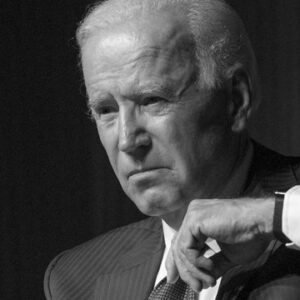For an alternate viewpoint, see “Point: President Biden Has Given Us the Greatest Economy Ever!”
There is an old Wall Street joke about a man who jumped off the Empire State Building. When asked at the 40th floor how things were going, he replied, “So far, so good.”
We have to wonder whether something similar might be said of President Biden. At the start of his re-election campaign, Biden is claiming all sorts of economic benefits from Biden economics. However, he might find that those claims come back to bite him in the heat of next year’s presidential election when the chickens of his past excessive public spending policies come home to roost.
To be sure, through loosening the public purse strings, Bidenomics has helped deliver a strong labor market, a welcome recovery from the COVID recession, and a much-needed increase in infrastructure spending. However, the big fly in the ointment is that these gains have come at a considerable cost to the country’s longer-run economic outlook. Under Biden’s watch, inflation reached a multi-decade high, the country’s public debt continued to soar, and there was a further erosion in the country’s external finances.
The major flaw in Bidenomics has been what President Bill Clinton’s former Treasury Secretary, Larry Summers, has described as “the least responsible” budget policy in the past four decades. Specifically, in March 2021, when the economy was already well on its way to recovery, Biden chose to introduce a $1.9 trillion American Rescue Plan. That came on top of the previous year’s $3 trillion bipartisan budget stimulus measures. This resulted in the U.S. economy receiving by far its largest peacetime budget stimulus on record, amounting to more than a staggering 20 percent of the country’s gross domestic product.
To say that Biden’s public spending spree has contributed to endangering the country’s long-term finances would be an understatement. According to the non-partisan Congressional Budget Office, the country’s public debt to GDP ratio is projected to increase from a disturbingly high figure of close to 100 percent today to almost 120 percent by 2033.
Unsurprisingly, the excessive degree of budget pump priming, coupled with a Federal Reserve that kept monetary policy too tight for too long, has also led to economic overheating and a surge in headline inflation to 9.1 percent by June 2022. That, in turn, has forced the Fed to slam on the monetary policy brakes in a big way to regain inflation control.
Over the past year, the Fed has increased interest rates by 5 percentage points, the most rapid rate of interest rate hikes since the early 1980s. In addition, the Fed has shifted from a policy of increasing market liquidity by $120 billion a month through its bond-buying activity to one of withdrawing $95 billion a month in liquidity by not rolling over its maturing bonds. In the process, the Fed has allowed for the unusual occurrence of a contraction in the broad money supply, and it has contributed to a disappointing stock market performance.
If Milton Friedman is right that monetary policy operates with long and variable lags of between 12 and 18 months, the Fed’s recent policy tightening could spell real economic trouble for Biden’s re-election hopes. It could mean the U.S. economy will experience an economic recession just as the election campaign is in full swing. If that occurs, Biden will have to somehow explain how he was not responsible for multi-decade inflation, an economic recession, an unsustainable public debt, and a poorly performing stock market under his watch.
If there is a silver lining in all of this for Biden, the economy is not the only issue on the American electorate’s mind, as last year’s midterm elections demonstrated. Next year, Biden will have to hope that he can once again use non-economic issues to divert the electorate’s attention away from the multi-decade high inflation and the high likelihood of a recession that will have occurred under his watch.

